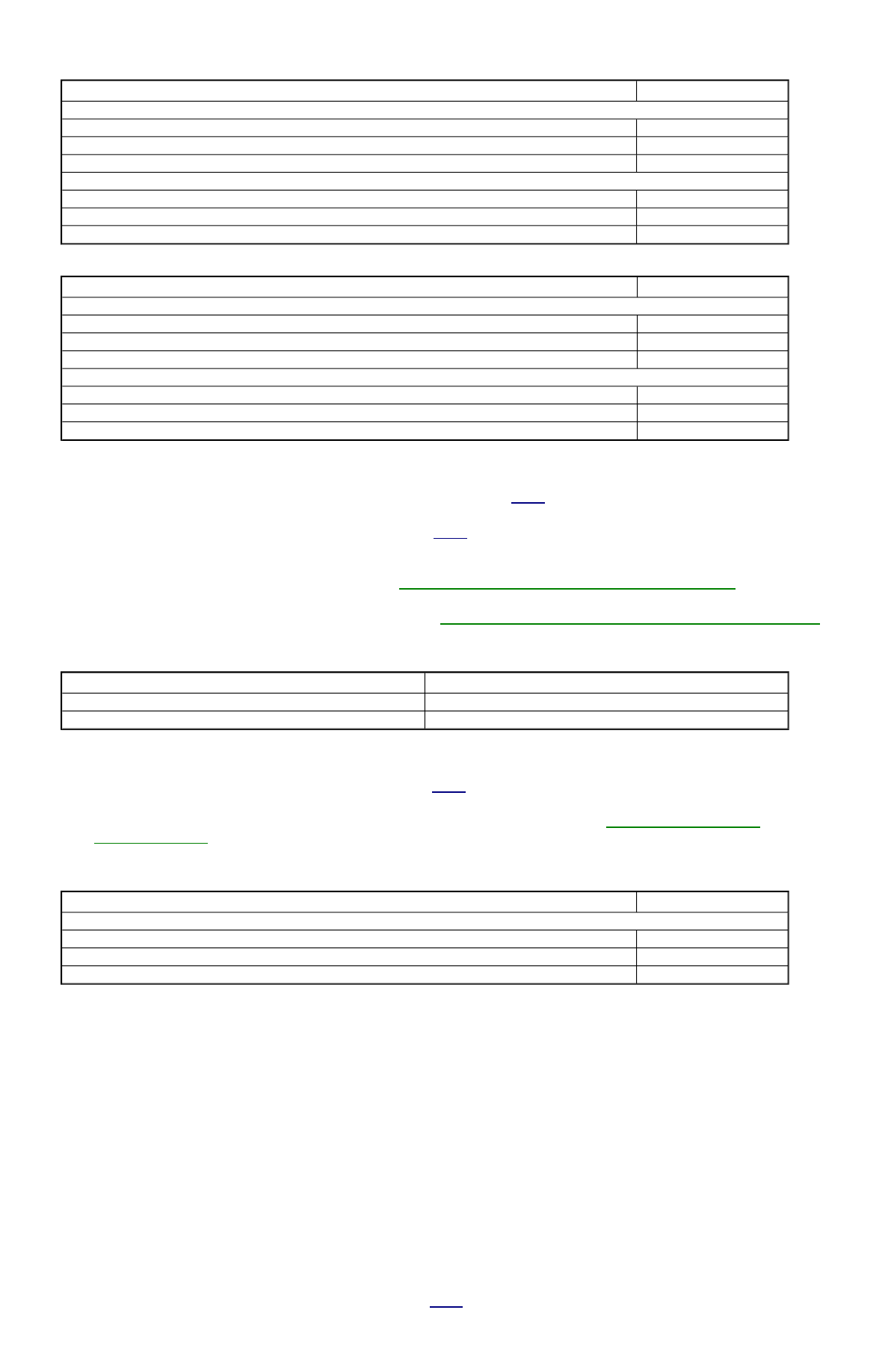Ford Festiva. Instruction - part 105

LINE PRESSURE TEST SPECIFICATIONS (ASPIRE)
LINE PRESSURE TEST SPECIFICATIONS (ALL EXCEPT ASPIRE)
LINE PRESSURE CUT-BACK TEST
1. Connect oil pressure gauges to line pressure and governor pressure ports. See
Fig. 6
. Position gauges so they can be seen from driver's
seat.
2. Connect a hand-held vacuum pump to vacuum modulator. See
Fig. 6
. Position vacuum pump so it can be operated from driver's seat.
With shift lever in "D", gradually increase engine RPM and observe pressure gauge readings. Record results.
3. With shift lever in "D", gradually increase engine RPM, and apply 8 in. Hg to vacuum modulator. When line pressure reading suddenly
decreases, observe the governor pressure gauge. Refer to
LINE PRESSURE CUT-BACK TEST SPECIFICATIONS
.
4. If governor pressure gauge readings are not within specifications, ensure rod in vacuum modulator is installed. If a rod is installed, rod
length may be incorrect or vacuum throttle valve is sticking. See
VACUUM THROTTLE VALVE DIAPHRAGM (MODULATOR)
under TESTING.
LINE PRESSURE CUT-BACK TEST SPECIFICATIONS
GOVERNOR PRESSURE TEST
1. Attach oil pressure gauge to governor pressure check port. See
Fig. 6
. Position gauge so that it may be seen from driver's seat. Shift
transaxle into "D" and road test vehicle.
2. Accelerate vehicle smoothly and record governor pressure readings at 20, 35 and 55 MPH. See
GOVERNOR PRESSURE
SPECIFICATIONS
. If pressure gauge readings are not within specifications, check for fluid leakage in line pressure hydraulic circuit
and/or governor pressure hydraulic circuit. Also check for a faulty governor.
GOVERNOR PRESSURE SPECIFICATIONS
REMOVAL & INSTALLATION
See the appropriate TRANSMISSION REMOVAL & INSTALLATION - A/T article in this section. Refer to the following menu:
TORQUE CONVERTER
The torque converter is a sealed unit and cannot be serviced. Check for cracked or worn ring in seal area. Measure bushing in converter boss.
If I.D. is larger than 2.090" (53.08 mm) on Aspire, 1.302" (33.075 mm) on Festiva and Tracer, replace torque converter. If metal particles are
found in ATF, replace torque converter. To clean torque converter, flush with solvent, drain and flush with ATF and drain ATF.
TRANSAXLE DISASSEMBLY
1. Remove torque converter. Attach transaxle to appropriate holding fixture. Remove park/neutral switch, kickdown solenoid and vacuum
modulator with rod. Remove oil dipstick and tube. Remove speedometer driven gear retaining bolt and lift out gear assembly. Remove
oil pump drive shaft and turbine shaft.
2. Remove oil pan. Remove valve body. DO NOT lose check ball and spring. Position transaxle with oil pump facing downward. With
flat-blade screwdriver inserted in wide slot between front clutch drum and sun shell, pry down on front clutch drum. Do this several
times as you rotate assembly 2 complete revolutions.
3. Using a feeler gauge, measure front clutch drum end play. See
Fig. 7
. Check clearance of small slot between front clutch drum tabs and
Application
psi (kg/cm
2
)
At Idle
"D"
46-54 (3.2-3.8)
"2"
150-166 (10.5-11.7)
"R"
76-95 (5.3-6.7)
At Stall Speed
"D"
141-157 (9.9-11.0)
"2"
150-166 (10.5-11.7)
"R"
251-262 (17.6-18.4)
Application
psi (kg/cm
2
)
At Idle
"D"
43-57 (3.0-4.0)
"2"
114-171 (8.0-12.0)
"R"
57-110 (4.0-7.0)
At Stall Speed
"D"
128-156 (9.0-11.0)
"2"
114-171 (8.0-12.0)
"R"
228-270 (16.0-19.0)
Vacuum Pump Reading
Governor Pressure psi (kg/cm
2
)
0 in. Hg (Atmosphere)
14-23 (.98-1.6)
8 in. Hg
6-14 (.42-.98)
Application
psi (kg/cm
2
)
Aspire & Festiva
20 MPH
13-21 (.9-1.5)
35 MPH
25-35 (1.8-2.5)
55 MPH
58-70 (4.0-4.8)